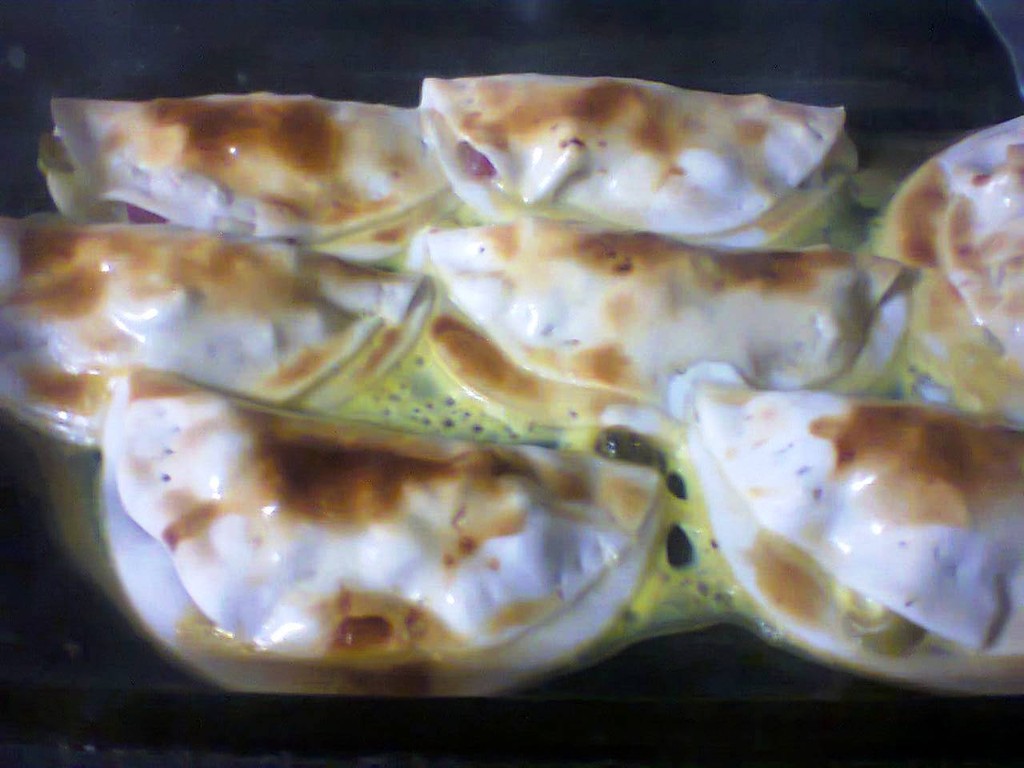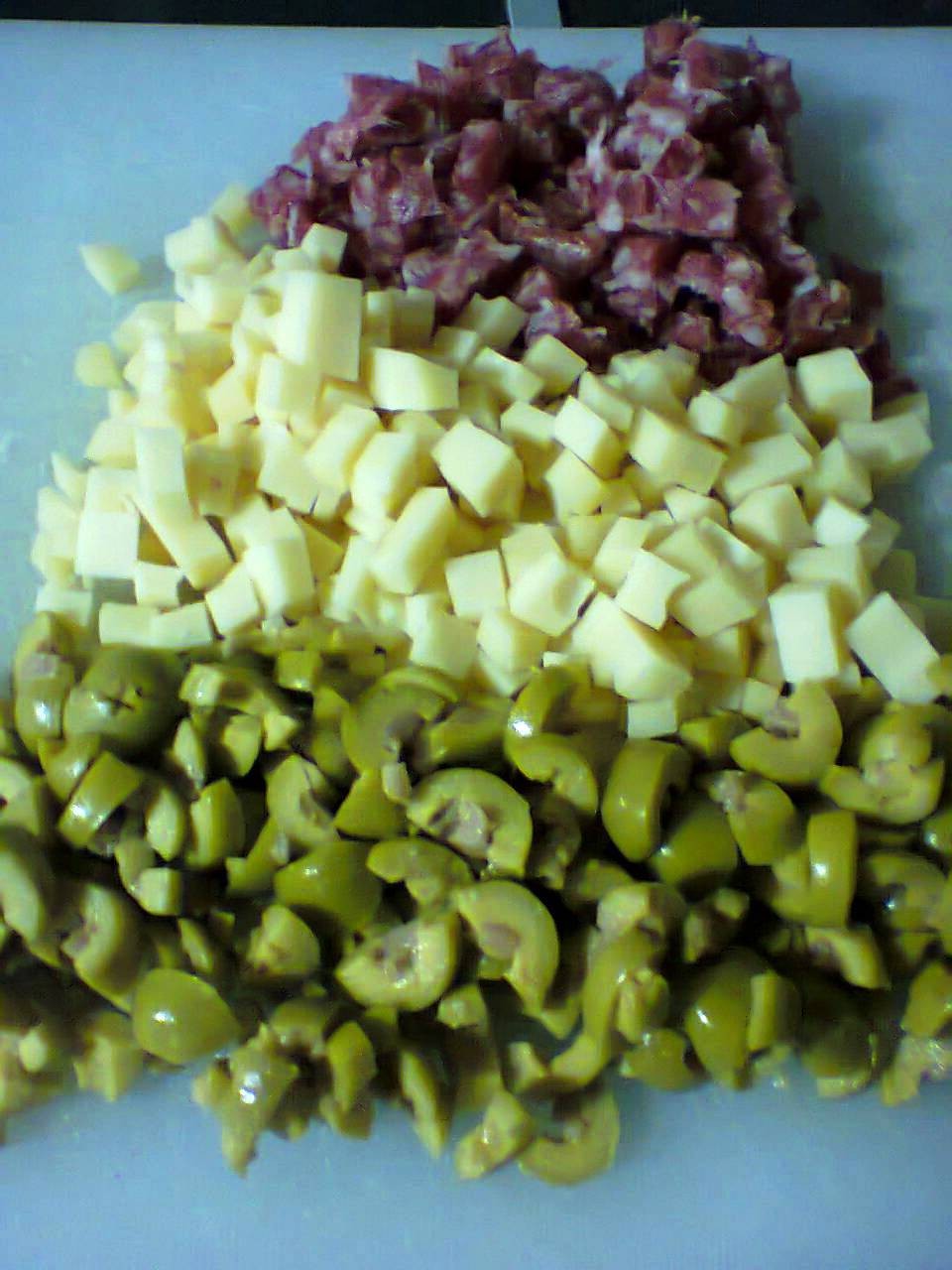Spanish Cuisine #6: Empanadas
I hope none of my friends from Argentina will read this entry, or at least, in case they do it, I hope they will limit themselves to appreciate the pictures without understanding the text. Apart from jokes, it was quite a surprise for me as well to find out that, contrarily to what people normally think, empanadas may have not been first prepared in Argentina. While doing some research about the recipe of this very popular dish, indeed, I discovered that empanadas are now almost universally believed to have originated in Spain, or at least to have been brought to Argentina by Spanish people.

What is an empanada? Pretty easy to explain: it is a baked pastry filled with several ingredients, which tend to vary according to the region. Indeed, the name empanada comes from the Spanish word "empanar", meaning "wrapping something with bread or dough in order to bake it". With all likelihood, this kind of food has its roots in the ancient custom of filling up pieces of bread with simple ingredients, as shepherds, travelers and, in general, nomadic people used to do. For this reason, it is believed that an archaic version of the empanadas was brought to Spain by the Moors during the Early Middle Ages. Over the centuries, of course, the recipe was refined and finally codified, appearing for the first time in a Catalan book of recipes, published in Barcelona in 1520. It seems likely, then, that empanadas were first brought from Spain to the New World by the Spaniards, and not the other way round.

This hypothesis may also be corroborated by the fact that many similar dishes are found in the rest of Europe. The so-called Cornish pasty, a typical recipe from Cornwall, a southern region of Great Britain, consists in a piece of dough filled up with minced meat and onion. In Italy, instead, to be precise in a southern area called Puglia, a specialty called panzerotto boasts an incredible likeness to the empanada, both in shape and consistence, differing only in the filling, which in this case is of tomato sauce and mozzarella cheese, following the classic Italian tradition. In Italy is also found a wider version of this kind of pastry, the calzone, which has now acquired international renown and may be filled up by almost any kind of ingredients.
After such a long presentation, which at least in my case has implied the only result of making my mouth water, it is high time to get down to cooking. The recipe of the dough used to make the empanadas is neither secret nor difficult to prepare. Water, wheat flour and a bit of lard are the only ingredients needed: mixing them together and kneading them a bit, you will have the dough ready in a few minutes. However, in my case, I must admit that I resorted to a ready-made dough (of course due to lack of time, not of ability! ). The product was really valuable, as the dough was even already arranged in pieces of circular shape, ideal for empanadas.

Now it comes to the filling, the most exciting part of the recipe. Of course, there are endless ways of preparing it: according to what I have been able to determine, the most common of them is using minced meat and onions (or potatoes), plus another optional ingredient (olives, boiled eggs, spices). Anyway, each area has its traditional filling, clearly depending on the kind of products most easily found. They may be summed up as follows:
- tuna fish (mostly in Galicia)
- sausage, tomatoes, olives (Catalonia)
- ham and cheese (Argentina, but quite common everywhere)
- veal, onion, olives (Argentina, Peru)
- chicken and cheese (Mexico)
- pepper, potatoes and meat (Bolivia)
- meat, onion and olives (Chile)
- shellfishes (Chile)
- meat and cheese, dough mad with corn flour (Venezuela)
- cheese with potatoes or pumpkin (Colombia)
Confronting with such a variety of ingredients, I opted for the few ingredients I had ready at hand, as all of them were of my taste and appeared in at least one of the abovementioned versions. Having minced cheese, olives and longanissa (a Catalan variety of sausage), then, I proceeded to the filling of the empanadas. Carefully placing the minced ingredients in the middle of the circle of dough (which are normally 10-15 centimetres wide), I finally closed them, obtaining some pastries of semicircular shape. Pressing the dough with a fork may help you in this operation.

A final touch may be given by spreading some slightly beaten egg on the surface of the empanadas, just before putting them into the oven. It is obviously a good idea to spread some oil on the casserole, in order to prevent the dough to adhere (such an obvious idea that I overlooked it). In most cases, 10-12 minutes in the oven at 200° C will be enough. Anyway, keep an eye on the pastry, as the empanadas will be probably ready as soon as the crust starts to gild.
Photo gallery
Content available in other languages
- Italiano: Cucina spagnola #6: Empanadas
- Español: Cocina española #6: empanadas
Want to have your own Erasmus blog?
If you are experiencing living abroad, you're an avid traveller or want to promote the city where you live... create your own blog and share your adventures!
I want to create my Erasmus blog! →







Comments (0 comments)